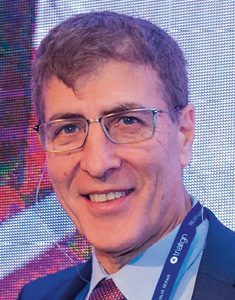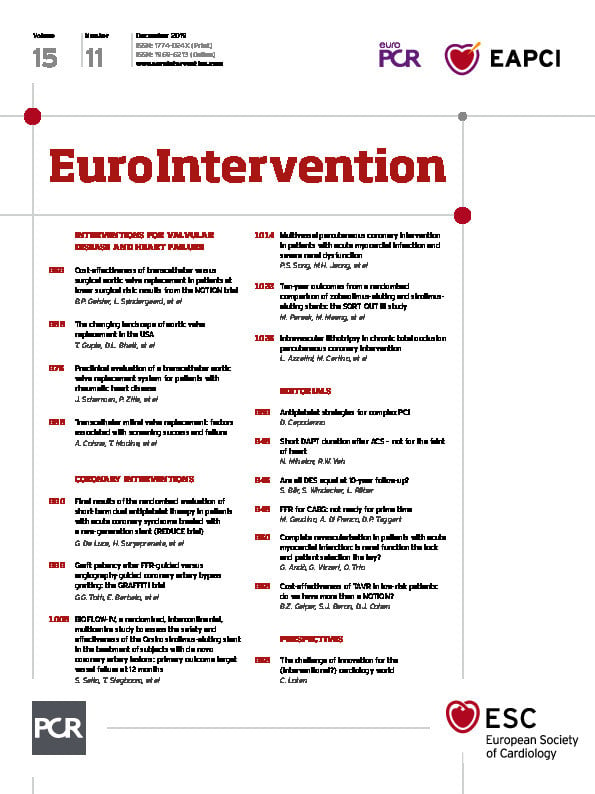
Over 20 years ago, one late afternoon we were sitting in the cath lab preparing for the patients of the next day. We had a challenging patient with diabetes and severe renal failure who had been unstable for several days despite maximal medical therapy. Some of us felt that coronary angiography would “push” him to terminal renal failure and the need for dialysis. During the brainstorming discussion on how to perform this procedure as safely as possible, some of us came up with the idea that we might be able to take out the dye before it reached the kidneys. One option that was raised was to withdraw blood from the coronary sinus a few seconds after the injection. We did in fact try this with the use of a “Berman” balloon catheter that occluded the coronary sinus for a few seconds and we were able to show that we could take out almost half of the dye injected. Moreover, we were able to show that we could get a very good picture with half the amount of dye usually used. With this successfully accomplished, I was about to write a scientific paper when a colleague told me that doing so would preclude my ability to secure the intellectual property (IP). I learned a new term and started to work with our tech-transfer office at the hospital and its lawyers. It took us almost one year to get the patents ready and sent to the right government agencies. On 9/11/2001, during the TCT meeting that was cancelled due to the vicious terror attack in New York and Washington, we were stuck for a week in Washington. During a breakfast meeting with a senior industry figure, I told him about my idea –he was very keen to invest in it if indeed I could get my patent granted. Unfortunately, when I got home I received a letter from him that included a very similar patent issued just a short time earlier. I was very frustrated and decided to go ahead with the publication1. A few years later, I learned that there was another startup company with the same idea. I then realised that I needed to learn more about the process of innovation.
To do so, I took a short sabbatical at the Stanford Biodesign program, which had just started. That sabbatical affected my future career significantly, as I began to understand that innovation is like a subspecialty that can and needs to be learned. I learned that the basic fundamental prerequisite for a successful startup is to find a “real unmet need”. Once that need is identified, innovators need to focus on three important T’s – Technology, Team and Timing. One needs to find a good/unique solution with remarkable technology. A second fundamental part is to form a strong team which, in addition to the doctor/inventor, will include bioengineers and business people who will be able to assess the potential of the technology and plan for the successful execution of the business plan. Timing is no less important. Sometimes the technology and the solution are too early for the market, while at other times other technological breakthroughs have found a better solution to the problem.
Indeed, for even the most promising ideas, the road to success can be quite bumpy and frustrating; on average only one out of 10 startups will make it to the “finish line”. Often, startups die due to mistakes that might have been prevented had the innovation process been performed in the right way. That is why understanding all of the issues related to the process of innovation is crucial for long-term success.
Returning to Israel after my Biodesign sabbatical had ended, together with the head of the bioengineering school at the Hebrew University, I started the Hadassah Hospital Biodesign program, run jointly by my hospital and the Hebrew University. The students who enrol in the program go through the entire process of defining unmet needs, understanding the importance of IP, understanding the regulatory process, finances, and markets and competitors, as well as prototype designing and the planning of animal and human studies. Every year, we form five or six groups that work on important unmet clinical needs. Several of the projects have led to successful companies and even the FDA approval of one device. To date, we have had more than 150 graduates who have learned the entire process of device innovation, “upgrading, and enriching” the hospital environment with the spirit of innovation. This has not been without some difficulties, initially from hospital directors, heads of departments and administrators who did not understand the need to invest time in and allocate resources to this venture. Another important (and still relevant) problem was the issue of academic recognition. The entire academic promotion process is based on writing and publishing scientific papers. Physicians in academic institutions (like my own hospital) were reluctant to spend the significant amounts of time needed to participate in these courses, or spend time as tutors since they do not get any academic recognition (even as instructors). We started a dialogue with the dean (which is still ongoing) to accept full academic credit for these courses and tutoring. Moreover, I do hope that review committees come to see issued patents as being as important as scientific papers. A success (and sometimes even failure) in a design solution for an important unmet need should be viewed as an important scientific achievement.
Another important step in bringing innovation to the forefront was the creation of the Innovation in Cardiovascular Intervention (ICI) meeting. Together with my co-chair Rafi Beyar and two renowned interventional cardiologists, Patrick Serruys and Marty Leon, we designed a unique meeting, which is dedicated to bringing the issue of innovation to centre stage. The meeting is designed to bring together all the stakeholders in the innovation process (physicians, bioengineers, entrepreneurs, venture capitalists [VCs], industry, etc.). Discussions are held to identify better the unmet needs in all fields of cardiology and, amongst other activities, there is the Academy of Innovation, the Global Startup competition, and the Technology Parade. Based on the success of the ICI meeting, collaborations around innovation have started with several major interventional meetings such as PCR, SOLACI TCT and CIT, with growing interest from the younger generation of physicians.
In the near future, the digital revolution and new technology such as advanced analytics, machine learning and augmented intelligence are going to change the process of innovation. In addition, med-tech innovation may shift the focus from outcome innovation to process innovation in order to create a value-based healthcare system2.
As the world is slowly becoming a “global village” and social networks are becoming critical working tools, we can share unmet needs from around the globe. Moreover, we can find the best partners for our projects globally in order to develop new solutions to a host of major unmet cardiology needs such as coronary and peripheral artery disease, stroke, and cerebrovascular disease, structural heart disease, heart failure, sudden cardiac death, etc.
Hospitals and academic institutions need to find ways to work together with the industry and encourage young entrepreneurs to become engaged in the field of innovation by providing the infrastructure and resources and academic recognition. In addition, major scientific meetings should promote the topic of innovation and dedicate space and time for all stakeholders to address the unmet needs of the future.
Conflict of interest statement
C. Lotan is Co-Director of the ICI Meeting.

